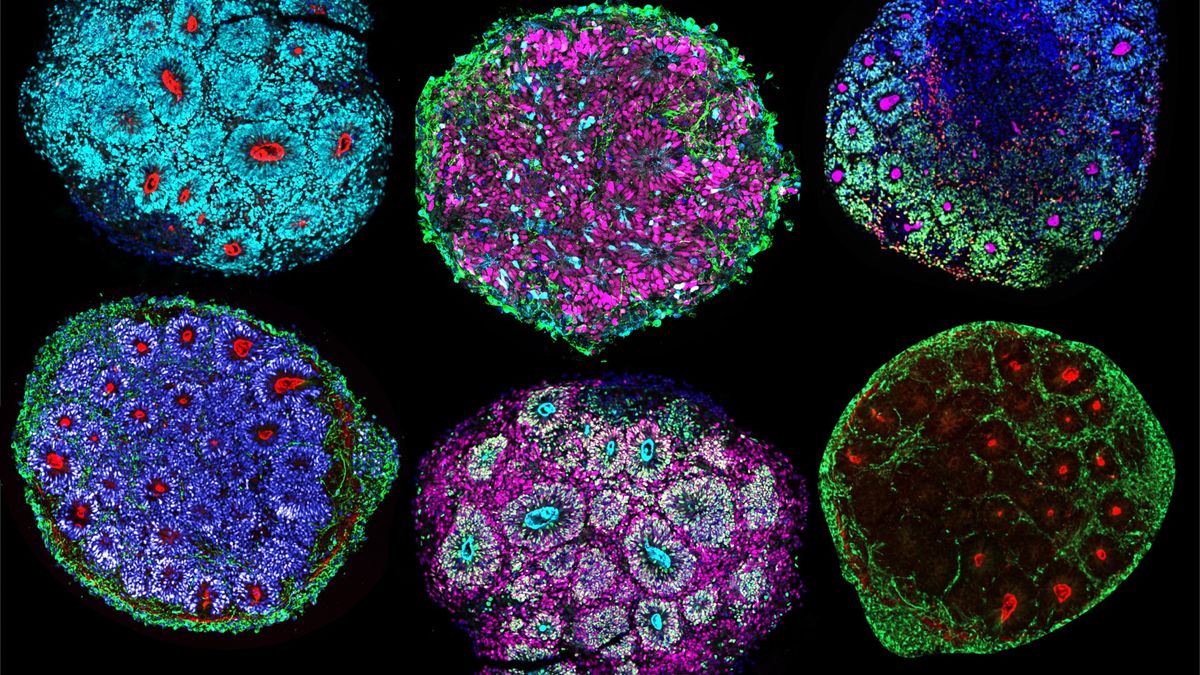For the first time, scientists have grown 3D brain models using cells from multiple people.
The new hybrid creations, which researchers have dubbed “chimeroids,” are a variation of brain organoids — tiny 3D models made of tissue that mimic the structure and function of a full-size brain. These models are more accurate to human biology than 2D cellular models or animals like lab mice. Because of this, scientists hope that the models will accelerate drug research and development.
Typically, brain organoids are grown from cells that are collected from just one donor. This means they can’t capture the genetic variability that exists between people, which can impact individuals’ brain development and their responses to drugs.
Creating chimeroids could overcome this hurdle, according to the scientists behind a new study, published June 26 in the journal Nature. Such a “village in a dish” could be particularly useful in the early stages of drug testing, they said.
Researchers have previously grown sheets of brain cells from the stem cells of different people, but this is the first time that 3D models of the brain have been grown this way.
Related: Lab-grown ‘minibrains’ may have just confirmed a leading theory about autism
“Chimeroids are an exciting tool that will be widely adopted in the field of neurodevelopment, probably with diverse applications,” Aparna Bhaduri, an assistant professor of biological chemistry at the University of California, Los Angeles who was not involved in the research, wrote in a commentary of the study.
To make the chimeroids, researchers collected stem cells from five people and then in the lab used growth-inducing chemicals to coax them into growing into brain organoids — each of which had cells from just one person. The scientists then tore the resulting organoids apart and recombined the cells within them to form chimeroids. This ensured that each chimeroid contained an equal number of cells derived from each person.
After three months, the chimeroids were around 0.12 to 0.2 inches (3 to -5 millimeters) in diameter and contained all the same types of cells that are normally found within the cortex — the outermost layer of the brain — of a fetus.
Separately, the team exposed the chimeroids to two neurotoxic chemicals: ethanol, which is associated with fetal alcohol spectrum disorders, and the antiepileptic drug valproic acid, which can increase the risk of birth defects. The team found that cells that came from different donors responded differently to these drugs, in terms of how extensively the chemicals hindered their growth, for example.
If scaled up to contain cells from even more people, chimeroids could theoretically help determine how patients will respond to drugs before they are tested in a clinical trial, the team said. They could then be segregated into specific treatment response groups.
“I’m excited about what the future holds in terms of using organoids, such as the chimeroids, to develop brand new ways to achieve therapeutic innovation for neurological disease,” Paola Arlotta, co-senior study author and a professor of stem cell and regenerative biology at Harvard University, told Live Science in an email.
Ever wonder why some people build muscle more easily than others or why freckles come out in the sun? Send us your questions about how the human body works to community@livescience.com with the subject line “Health Desk Q,” and you may see your question answered on the website!











